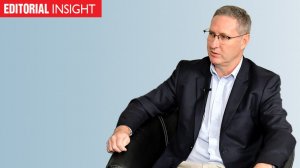In his powerful new documentary ‘A Life On Our Planet’, veteran natural history broadcaster Sir David Attenborough offers an authoritative yet disturbing witness statement on the harm humanity has inflicted on the planet over his lifetime – he is 93. But he also uses the platform to offer a vision for a future in which both “people and nature can thrive”, based on the principle of ensuring that “everything we do, we can do forever”.
One of Attenborough’s four goals for realising this vision involves the phasing out of finite fossil fuels and replacing them with “the eternal energies of nature”, such as wind, solar, hydro and geothermal. As he so eloquently highlights, the living world is itself essentially solar-powered: “The Earth’s plants capture three- trillion kilowatt-hours of solar energy each day. That’s almost 20 times the energy we need just from sunlight”.
Attenborough’s renewables vision statement may appear lofty, but it is, in fact, fully aligned with some of the major transitions already under way.
One of these is the rise of renewables, especially solar photovoltaic (PV) technology, which the International Energy Agency (IEA) recently dubbed the “new king of electricity”. The combination of sharp cost reductions over the past decade, supportive policy and access to low-cost capital have made solar PV cheaper than new coal- or gas-fired power plants in most countries, including South Africa.
Even under the IEA’s most conservative scenario, renewables will meet 80% of the growth in global electricity demand to 2030, led by solar PV and wind. The roll-out would be even faster under scenarios that take account of the rising number of country commitments for achieving net-zero emissions by 2050.
What does this mean for South Africa?
Firstly, given its formidable solar and wind resources, renewables should be at the heart of this country’s energy, industrial, environmental and economic recovery strategies.
On the energy front, a large-scale renewables deployment is not only needed but urgent. Wind and solar PV, supported by grid and storage investments, are the quickest and cheapest solutions for addressing the current supply deficit.
The country’s industrial strategy should be coupled to this massive roll-out, making South Africa a regional and global hub for key renewables, smart-grid and storage inputs, including critical minerals. The variability of solar and wind could, through coherent strategy and planning, be turned into an advantage by redirecting electricity that would otherwise be curtailed the way of electric mobility, industrial heating and cooling, or to produce green hydrogen.
Economically, an accelerated deployment is low-risk and high reward. Low risk, as it can be financed privately, paid for off Budget and stimulate the creation of new jobs. High reward, as the stabilisation of supply and the tariff path will help to rebuild much needed investor confidence.
Environmentally, South Africa could use the energy transition to begin a bigger journey towards meeting Attenborough’s sustainable living threshold of ensuring “everything we do, we can do forever”.
EMAIL THIS ARTICLE SAVE THIS ARTICLE ARTICLE ENQUIRY FEEDBACK
To subscribe email subscriptions@creamermedia.co.za or click here
To advertise email advertising@creamermedia.co.za or click here











